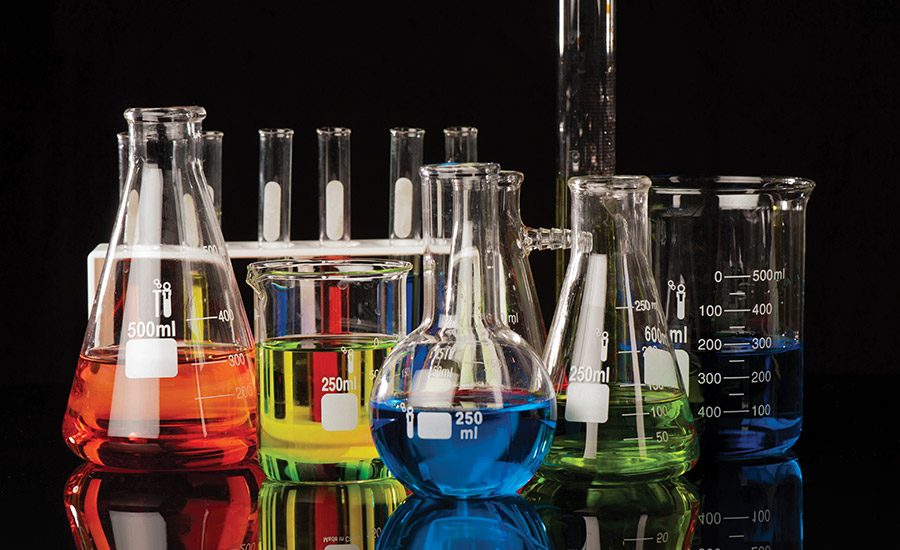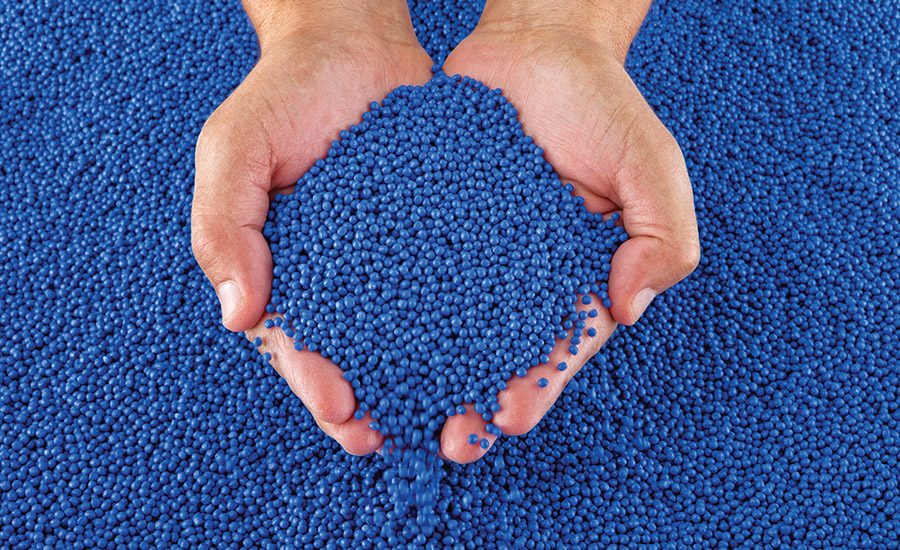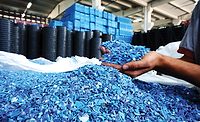2016 Raw Materials and Chemicals Roundtable
Leading materials and chemicals suppliers and industry leaders share their thoughts on this complicated but vital aspect of the industry.






Adhesive and sealant formulations depend on raw materials and chemicals. So what’s happening in this often turbulent industry?
To find out, we reached out to leading materials and chemicals suppliers, industry leaders, and the ASI online community. Following are their insights into this complicated but vital aspect of the industry.
How is the increasingly global economy impacting raw materials/chemicals supplies and/or suppliers?
David E. Anderson, Global Vice President of Marketing, Green Biologics: A growing global economy is impacting suppliers by creating a situation of overcapacity in many regions.
Christine Bryant, Senior Vice President, Commercial Operations, Coatings, Adhesive and Specialties, Covestro LLC: The increasingly global economy is forcing raw materials suppliers to think more broadly. The benefit for our customers is that they have access to greater supply options, which strengthens competition between raw materials suppliers. This means that suppliers have to be more nimble and aggressive to maintain or grow market share. Companies with a global footprint have an advantage in that we can “think globally, act locally,” providing local supply solutions to customers around the world.
Chris Chrisafides, Commercial Vice President, Dow Polyurethanes, North America: Driven by our rapidly expanding global population, we ensure our unique chemical, physical, and biological science capabilities work together to provide innovative products and solutions, where they are needed most. Regionally focused technical and commercial teams keep our efforts aligned with these needs of the local market, while a robust global production and supply chain enables delivery of our innovation.
Daniel S. Murad, President and CEO, The ChemQuest Group Inc.: A combination of global and regional factors is constantly at play and requires balancing. Let’s look at the feedstock slate first. In the U.S., nearly 80% of slate is lightweight (natural gas, shale gas, ethane) and heavy-weight feedstocks (naphtha based), compared to China, where nearly all the crackers are based on naphtha. Light feedstock is significantly lower in yield of the C4-C10 or higher raw materials that contribute critical performance characteristics for the adhesives and sealants industry. As a result, supplies and pricing equilibrium must be restructured to balance between the global imports and locally available supply.
Second, quality is an issue. For a number of specialty raw materials, the technology and quality of Southeast Asian sources still are unequal to Western standards. As a result, the supply and demand for these raw materials are typically managed closely based on global capacity and utilization. Present oil pricing and oil excess supply is providing ample supply of materials on a global scale, as well as ample opportunity for adhesives and sealants manufacturers to increase their margins.
The economic cycle is also at play. China and the European Union’s slowdown further exasperates supply availability far in excess of demand.
Should the oil oversupply and economic slowdown persist, the industry will have to structurally adjust its capacities, analogous to the Great Recession of 2008-2010.
How does your company address the constantly changing landscape of regulation/legislation?
Anderson: In addition to our own internal monitoring at both corporate and site levels, we are an active member and participant in The American Chemistry Council (ACC).
Bryant: We have a cross-functional advocacy team dedicated to monitoring industry regulations and public policy issues affecting our business. By engaging with state and federal governments, industry associations, non-governmental organizations and the media, Covestro is taking a proactive stance to ensure that we’re in compliance with regulations, while also educating legislators on the benefits of chemistry so they can make informed policy decisions. We think and act regionally, but watch for global changes. Regulations are applied at a local or regional level, but we need to be mindful of what is happening in other parts of the world.
Chrisafides: We realize change isn’t easy, which is why we proactively monitor and understand the regulatory climate facing our industry. We collaborate closely with our end users to develop the science innovations needed to address regulatory needs and changes. Of equal importance, we also work with regulators to ensure that the feasibility and timing of new regulations are realistic. Our experts are available to help our customers to ensure smooth and seamless transitions during these times of change.
Murad: We continually monitor leading countries such as Germany and the U.S. (particularly California and the Ozone Transport Commission states) for indicators and patterns. Likewise, we monitor scientific studies, non-government organizations and media activities.
The cost for complying with regulations continues to rise, and it puts significant pressure on small- and medium-sized enterprises. Companies address these demands through various means, including trade associations, industry forums such as the “sustainability summit,” American Chemistry Council initiatives, regulatory consultants, collaboration with buying cooperatives, adding internal resources, and others.
How important is a collaborative relationship between raw materials/chemicals suppliers and manufacturers/formulators in the adhesives and sealants industry?
Anderson: Green Biologics is committed to building strong collaborations across the value chain to shift the dialogue away from price to value-added solutions for our customers.
Bryant: Collaboration is core to what we do at Covestro. In fact, it is the basis of our new company name (collaboration, well-invested, strong). The collaboration between formulators, manufacturers and other players along the value chain is essential to driving innovation. We work closely with our customers and their customers to better understand their needs so we can deliver a customized solution that ultimately benefits the end user.
Chrisafides: Collaboration between chemical suppliers and formulators, as well as downstream brand owners, is critical in the adhesives and sealants industry to ensure innovation thrives. Formulators provide a critical piece of the voice of the value chain, which allows raw material suppliers to develop novel backbones that enable value-add throughout the value chain from raw material supplier to end use consumers.
Murad: Collaboration is critical. Adhesive manufacturers and formulators do an excellent job of compounding raw materials to deliver value-added solutions. While some adhesive manufacturers are backward-integrated into developing and producing their own raw materials, that function is typically served by raw material suppliers.
Performance requirements are increasingly becoming more sophisticated, with new substrates and multi-functional characteristics. As a result, adhesive manufacturers need to communicate these new critical-to-quality requirements, specifications and unmet needs to their suppliers in order for raw material suppliers to manipulate the molecular architecture of their respective raw materials.
Similarly, raw material suppliers must stay abreast of leading macro drivers, trends, and substitute materials to initiate robust and novel approaches. Likewise, they are striving to mimic the end-use requirements in their laboratories in order to fully understand the needs and communicate the full capabilities and limitations of the molecule.
What factors are driving innovation for raw materials/chemicals producers?
Anderson:We are a leader in the development of renewable specialty chemicals, but we realize that a green premium is not always going to be achievable. Rather, we focus on improving performance first and let the renewable aspects of our technology be an additional benefit to our customers’ sustainability objectives.
Bryant: There is a greater push for sustainable solutions in the markets that we serve, and sustainability and innovation go hand in hand. We work with players along the value chain to gather input for unsolved market needs. For the adhesives and sealants industry, sustainable solutions can be translated into the incorporation of bio-based and renewable materials, or the shift to increased waterborne solutions, which is what we’re seeing with high-performance adhesives for automotive interiors. For many of our customers, innovation can even include more sustainable packaging concepts for their final products.
Chrisafides: Global challenges such as rapid population growth are creating drivers across many market segments: provision of adequate and affordable housing remains a key priority; the need for sustainable consumer goods is increasing at a dramatic rate; durable infrastructure for transportation, utilities, energy, waste management and telecommunications are needed; keeping up with the needs of the fast pace of urbanization and a growing middle class; needs for lighter, efficient and reliable vehicles to match demand and reduce emissions. Finally, we are challenged to learn how to feed more people with less farming land in a sustainable way. Innovative adhesives, sealants and binders will provide solutions for many of these challenges, and the solutions will rely on innovation both by the formulator and by the raw material provider. This is achieved by improving the manufacturing of our materials, as well as their performance for the marketplace. Understanding these downstream requirements and incorporating them into our materials is key.
Murad: There are many sources for innovation within the adhesives and sealants industry. Macro drivers include resource constraints, such as depleting water and food sources; population growth; population demographics, such as aging; and urbanization.
Energy efficiency has resulted in lightweighting by use of plastics, composites, lightweight alloys, etc., as well as higher insulation requirements. Substrates have become diverse and dissimilar; these combinations are constantly changing. Substitution of other fastening methods continues, such as industrial mechanical fasteners; welding, brazing and soldering; and others.
Regulatory concerns also continue, such as volatile organic compounds; hazardous air pollutants; REACH; halogens; bisphenol-A; and more. Sustainability issues include lifecycle analysis (cradle to cradle, cradle to grave, etc.), recycling and compostability, waste reduction, and others.
Emerging applications include energy sources, such as wind and solar; smart buildings; point-of-use water purification; new medical and/or electronic uses; and many more.
What does the future hold (near- or long-term) for the supplies and/or suppliers of raw materials/chemicals?
Anderson:The major issues facing the chemical industry and the global economy in general are clearly the situation with oil, continued and escalating instability in the Middle East, overcapacity, and economic slow-down in China and Brazil. The future comes back to the core principle of innovation. Companies that are committed to driving innovation, proactive development of customer solutions, and a solid fiscal responsibility with investments will overcome these challenges.
Bryant:Here in the U.S., the affordable and abundant supply of natural gas has been a game changer for manufacturers. Many sectors, including the chemical industry, are making the most of this energy advantage, investing in new facilities and expanding existing plants. I think we can expect to see this trend take greater hold in the short term.
The shale gas boom benefits raw materials companies like ours, because we use it as both a fuel source and a raw material. In addition, like many U.S. manufacturing companies, we benefit from the overall economic vitality created by low-cost energy.
What may be counterintuitive is that while low natural gas pricing is a game changer, this has not slowed the movement toward increased environmentally friendly and sustainable materials. That type of innovation will be ongoing, and we will continue to engage with our value chain to meet the needs of the market. Of course, we’ll closely follow the situation in the U.S. and elsewhere, aligning our global operations so that we leverage evolving market conditions for the benefit of our customers and shareholders.
Chrisafides:We in Dow see it as a promising future. As we have outlined in this conversation, global megatrends such as clean water, abundant food supplies, energy, and infrastructure will continuously need innovation and new materials. Examples include durable pipe coatings for water transportation and strong adhesives and sealants for infrastructure build/repair. While existent materials may deliver against some needs, there is no doubt that new materials will have to be invented for the more demanding and sustainable requirements. Just in the U.S., the federal government has approved $305 billion for road and bridge repairs over the next five years, and this brings short-term opportunities for our industry. The same dynamic is occurring in other countries where infrastructure was built after World War II.
Murad: The future for supplies and suppliers is multi-faceted. Globalization is shifting the economic balance to the East. This requires new supply chains and new competition, and adds to the complexity of managing global supply and demand dynamics.
Consider 500 years ago, when Asia dominated the world. China and India made up approximately 50% of world GDP, while Western Europe and the EU and North America accounted for 20%. But the industrial revolution changed the balance of power.
In 1950, Western Europe, the EU and North America represented 50% of world production. China and India fell to 8%, and Japan emerged as the major Asian economic power. By 1980, the world was dominated by the advanced economies.
In 2050, we expect that China and India will regain their original status from the year 1500 and account for half of the world’s production. With Africa and Latin America’s ascent, the advanced economies will be relegated to minority status. Asia-Pacific will contribute over 60% to the total growth in chemical demand until 2050, whereas North America and Western Europe will contribute only 24% to the total growth.
In addition, a “Battle of Empires” will ensue to balance the hydrocarbon-related vs. bio-based businesses. New empires will provide renewable and agriculture-related companies with access to arable land and/or renewable feedstock and/or sources from waste streams. Old empires will include hydrocarbon-related companies.
Raw material volatility will continue to increase, as investments in cracking lightweight feedstocks yields lower amounts of high-molecular-weight intermediates and investment in naphtha crackers becomes primarily focused in the Middle East and/or Southeast Asia. Elongated, complex supply chains inhibit response time to customer demand and become susceptible to disruption.
Regulatory implications will provide similar challenges to detect, comply and develop preventative measures while simultaneously provide opportunities to develop new, unique solutions. In addition, new product development activities will provide opportunities based on the “innovation” drivers described previously.
For more information, visit www.greenbiologics.com, www.covestro.com, www.dow.com and www.chemquest.com.
Looking for a reprint of this article?
From high-res PDFs to custom plaques, order your copy today!









